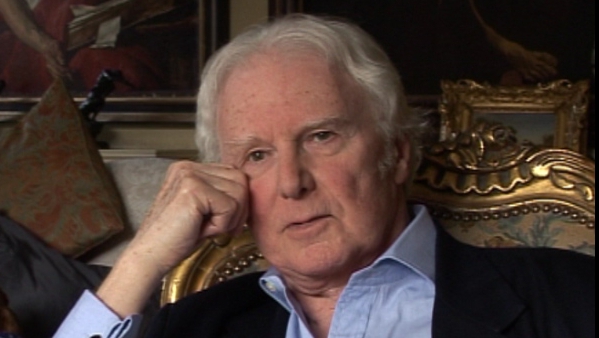NEXT STORY

Great monuments of the 20th century
RELATED STORIES

NEXT STORY

Great monuments of the 20th century
RELATED STORIES


|
Views | Duration | |
|---|---|---|---|
| 1. John Singer Sargent as a painter of the aristocracy | 1213 | 00:58 | |
| 2. The difference between a great painter and a good painter | 959 | 03:40 | |
| 3. Great monuments of the 20th century | 699 | 03:18 | |
| 4. The influence of World War I on John Singer Sargent's art | 478 | 01:12 | |
| 5. Is love a mental illness? | 2 | 632 | 02:10 |
| 6. Falling in love with a boy from the Hitler Youth | 1 | 701 | 04:12 |
| 7. My three parents | 542 | 01:39 | |
| 8. A 1930s child | 438 | 02:10 | |
| 9. Highly educated in all the wrong areas | 584 | 00:55 | |
| 10. An education provided by trips to museums | 435 | 02:02 |

Yes, I think it’s a kind of rather depressing, well, I suppose, post-Second World War reaction to wealth and comfort and display and swagger. He’s quite certainly the last of the real swagger portrait painters. And people’s political views, as well as their religious views, do affect their regard or otherwise for painters.
I mean, really he’s probably held in far higher esteem by Roman Catholics than by any other community. Whereas I say you have to look past all that and see what is there. You can’t ignore it. I think there are painters whose faith and conviction in that faith are so dominant that they actually contribute to what he paints. I was struck, when looking last December at the Isenheim Altar, the great Grünewald, and then here was a painter who could not have painted that if he did not profoundly believe in everything that is in it. It was… it is there. It is that that fires it. And he’s a man whom I think sat down one day and said, you know, who was Christ? Was he some beautiful young man with fair hair, or...? And decided, no, Christ was a Jew. What does a Jew look like? And so the crucified Christ in that great altarpiece is a heavy man with a hook nose and a dark skin. No one had ever done that before.
And that is not done out of disrespect, that is done out of profound understanding of the events, and to some extent, the theology behind what he’s been commissioned to paint. It’s like painting a little monster in the corner cupboard with syphilitic sores. Oh no, the painting was for the Antonites, who were a healing community. They were the doctors of the day. And where would a syphilitic go, but to the Antonite monastery? And so here’s an absolutely brand spanking new disease with these wonderful decays, so paint them. Put them in, you know. A thinking painter, a seeing painter, a feeling painter. And then... there are so many paintings that are improved – funny sort of word to use – but they are improved, they are made more intense by the understanding the painter has for the event.
And when Rembrandt was rambling around in Amsterdam, mixing with old Jews, his understanding of Old Testament subjects became much less dramatic and much more profound. And that’s what… that’s the difference between a great painter and a good painter: puts more in the picture than can be seen.
Born in England, Brian Sewell (1931-2015) was considered to be one of Britain’s most prominent and outspoken art critics. He was educated at the Courtauld Institute of Art and subsequently became an art critic for the London Evening Standard; he received numerous awards for his work in journalism. Sewell also presented several television documentaries, including an arts travelogue called The Naked Pilgrim in 2003. He talked candidly about the prejudice he endured because of his sexuality.
Title: The difference between a great painter and a good painter
Listeners: Christopher Sykes
Christopher Sykes is an independent documentary producer who has made a number of films about science and scientists for BBC TV, Channel Four, and PBS.
Tags: Isenheim Altarpiece, Colmar, Antonites, Unterlinden Museum, John Singer Sargent, Matthias Grünewald, Jesus Christ, Nikolaus Hagenauer, Rembrandt Harmenszoon van Rijn
Duration: 3 minutes, 40 seconds
Date story recorded: 2008
Date story went live: 28 June 2012